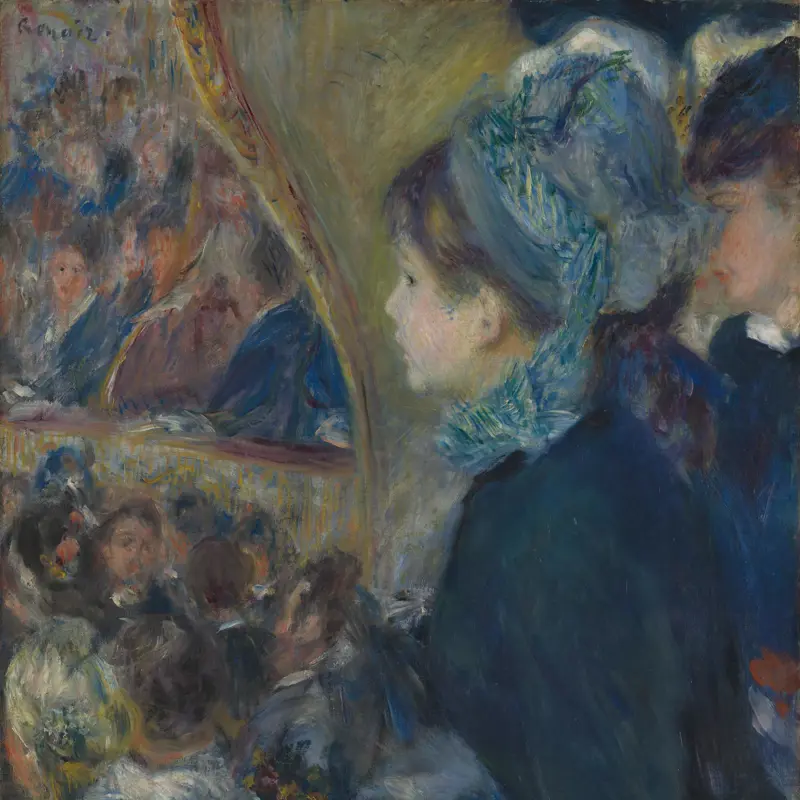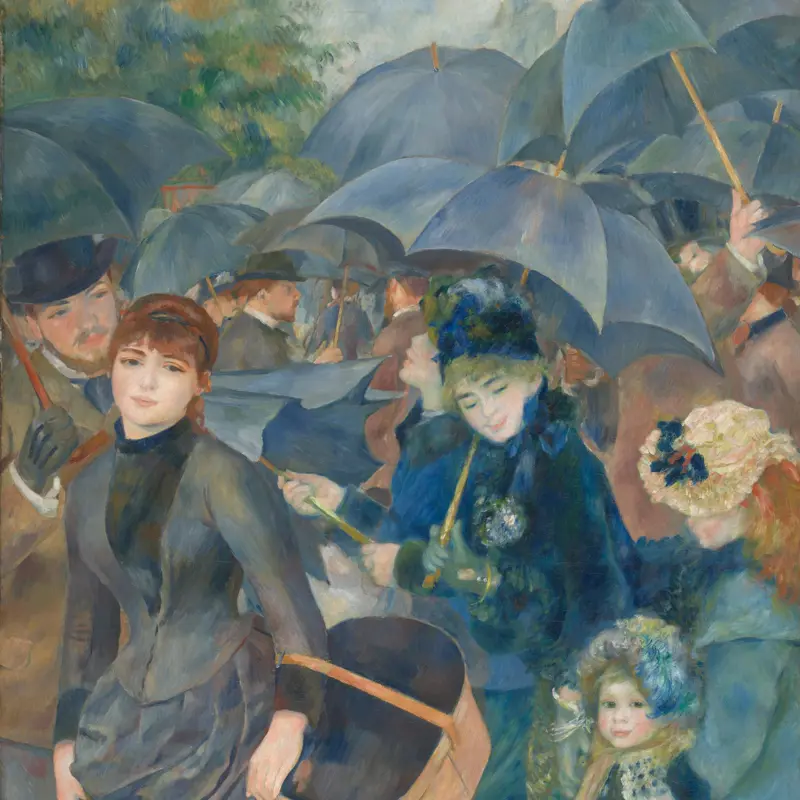Pierre-Auguste Renoir, 'Misia Sert', 1904
About the work
Overview
This is a portrait of Misia Sert, née Godebska, who was the darling of the highest artistic circles in France at the turn of the twentieth century. It is hard to overstate quite how glamorous and influential she was: the local newspapers dubbed her the 'Queen of Paris’. A talented pianist, she associated with nearly all the most famous artists, writers and musicians in the city and sat for portraits by Henri de Toulouse-Lautrec, Pierre Bonnard and Edouard Vuillard. Renoir painted her portrait seven or eight times, each of which required three day-long sittings per week for a month. This is one of the best known. It is dated 1904, the year she turned 32 and divorced her first husband. Renoir has captured her shimmering glamour and poise but also perhaps something of her emotional turmoil – she seems to be looking directly at the viewer yet not quite focusing on us.
Key facts
Details
- Full title
- Misia Sert
- Artist
- Pierre-Auguste Renoir
- Artist dates
- 1841 - 1919
- Date made
- 1904
- Medium and support
- Oil on canvas (unlined)
- Dimensions
- 92.1 × 73 cm
- Inscription summary
- Signed; Dated
- Acquisition credit
- Bought, 1960
- Inventory number
- NG6306
- Location
- Room 43
- Collection
- Main Collection
- Frame
- 20th-century Replica Frame
Provenance
Additional information
Text extracted from the ‘Provenance’ section of the catalogue entry in Martin Davies, with additions and some revisions by Cecil Gould, ‘National Gallery Catalogues: French School: Early 19th Century, Impressionists, Post-Impressionists, etc.’, London 1970; for further information, see the full catalogue entry.
Exhibition history
-
2009Long Loan to Tate (2009 - 2019) (Tate Exchange Loans)Tate Gallery (London)25 March 2009 - 24 March 2019
-
2009Renoir au XXe SiècleGaleries Nationales du Grand Palais21 September 2009 - 4 January 2010Los Angeles County Museum of Art14 February 2010 - 9 May 2010Philadelphia Art Museum12 June 2010 - 5 September 2010
-
2012Misia, Queen of ParisMusée d'Orsay12 June 2012 - 9 September 2012
-
2016Normandie Impressionniste 2016Musée des Beaux-Arts (Rouen)16 April 2016 - 26 September 2016
Bibliography
-
1953M. Sert, Two or Three Muses: The Memoirs of Misia Sert, London 1953
-
1958F. Übertragenn and H. Andertann, Misia: Pariser Erinnerungen, Wiesbaden 1958
-
1958Wildenstein and Co., Renoir: Loan Exhibition for the Benefit of the Citizens Committee for Children of New York City (exh. cat., Wildenstein and Co., 8 April 1958 - 10 May 1958), New York 1958
-
1962The National Gallery, The National Gallery: January 1960 - May 1962, London 1962
-
1970Davies, Martin, and Cecil Gould, National Gallery Catalogues: French School: Early 19th Century, Impressionists, Post-Impressionists etc., London 1970
-
1980A. Gold and R. Fizdale, Misia: The Life of Misia Sert, New York 1980
-
1981M. Wagner, 'Review. Misia: The Life of Misia Sert', French Review, LIV/3, 1981, pp. 490-1
-
1988B.E. White, Renoir: His Life, Art and Letters, New York 1988
-
1997C.B. Bailey, L. Nochlin and A. Distel, Renoir's Portraits: Impressions of an Age (exh. cat. National Gallery of Canada, 27 June - 14 September 1997; Art Institute of Chicago, 17 October 1997 - 4 January 1998; Kimbell Art Museum, 8 February - 26 April 1998), New Haven 1997
-
2001
C. Baker and T. Henry, The National Gallery: Complete Illustrated Catalogue, London 2001
-
2005Lemoine and S. Toubianas (eds), Renoir-Renoir (exh. cat. Cinémathèque Française, 26 September 2005 - 9 January 2006), Paris 2005
-
2006A.-C. Rzewuski, La double tragédie de Misia Sert, Paris 2006
About this record
If you know more about this work or have spotted an error, please contact us. Please note that exhibition histories are listed from 2009 onwards. Bibliographies may not be complete; more comprehensive information is available in the National Gallery Library.










